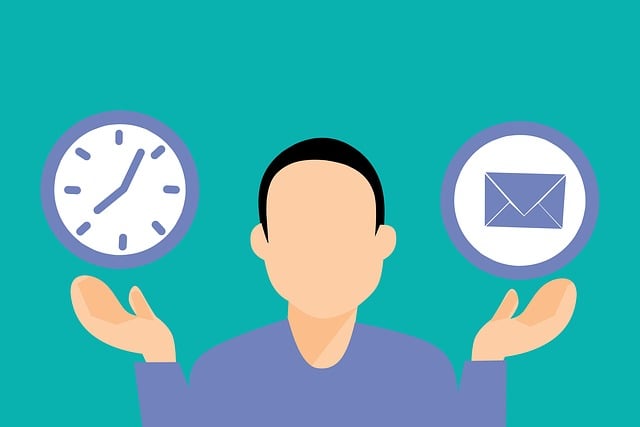
You lose work when warm prospects go cold because life gets busy. Follow-up email automation keeps your pipeline moving without requiring you to monitor your inbox constantly. In two minutes, you can switch on AI follow-up emails that send timely nudges, book calls, and close loops while you write. This post demonstrates how to establish straightforward, dependable automation that safeguards relationships and revenue.
Everything I’ve shared here—and more—is in my book, available on Amazon. Click the link if you’re ready to take the next step.
Why Follow-Up Email Automation With AI Matters
Smart follow-ups protect revenue you already earned. The right cadence feels respectful, saves you time, and brings quiet leads back to the table.
Missed replies, forgotten check-ins, and slow estimates cost real money. Automation closes gaps with gentle, on-time reminders that feel human.
Timely Replies at Scale With AI Autoresponders
Your clients value responsiveness, but you cannot watch the inbox all day. AI autoresponders acknowledge messages, set clear expectations, and direct users to the next steps. A brief, friendly first touch can reduce anxiety and give you time to craft a thoughtful reply.
Reduce Drop-Off Using AI-Scheduled Sequences and Nudges
Leads go quiet for ordinary reasons such as travel, deadlines, or decision fatigue. AI-scheduled sequences deliver polite follow-ups at sensible intervals. Use three steps over 7–10 days, then a close-the-loop note. The system does the remembering so you can focus on writing.
Follow-Up Email Automation for Client Retention
Retention grows when you consistently follow up after delivery. Add automated client reminders thirty days after a project to ask about results, offer small improvements, or suggest a maintenance package. Consistent care turns one-off gigs into repeat work and referrals.
Quick Trigger Map
| Trigger | Automation Action | Example Message |
| Proposal sent | Day 2 nudge | “Any questions on scope or timeline?” |
| No reply after the call invite | Day 3 reminder | “Want me to send three times for next week?” |
| Invoice issued | Day 5 friendly check | “Just checking the payment link worked.” |
| Delivery complete | Day 30 value check-in | “How did the post perform? Want a refresh?” |
Setting Up Follow-Up Email Automation in Your AI Stack
Tools only help when they talk to each other. Here is the lightest stack that connects your inbox, calendar, and CRM, so follow-ups fire without manual work.
Tools are not effective until they communicate with each other. A light stack connects your inbox, calendar, and CRM, so follow-ups are triggered automatically without manual work.
Pick an AI-Friendly CRM and Email Tool (HubSpot, MailerLite, Zapier)
Choose a simple CRM that tracks contacts, stages, and timelines. Pair it with an email tool that supports sequences and personalization. Use Zapier or Make to pass data between forms, spreadsheets, and your CRM so every new lead gets the right workflow. Keep the stack light so you can maintain it.
Connect Calendars, Lead Capture, and Reminders With Zaps
Create zaps that add new leads to a Prospects list, start the three-step sequence, and include your calendar link. When someone books, the zap pauses further emails automatically. This prevents awkward double pings and keeps your process clean and organized.
Segment Prospects Using Lead Scoring and Smart Lists
Not every lead needs the same cadence. Use simple scores, such as recent reply, budget fit, and service match. High-fit leads get faster follow-ups. Low-fit leads receive a gentle monthly tip or case study. Segmentation keeps pressure off the wrong people and saves time for the right ones.
Writing Better Emails: Follow-Up Email Automation Meets AI
Automation fails when it sounds robotic. Keep your voice, add specifics, and let small AI assists speed up drafting and personalization.
Automation fails when it sounds robotic. You can keep your voice and still scale with templates and light AI editing.
Draft Human-Sounding Copy With Natural Language Generation
Start with your own tone and plain words. Let AI draft a first pass, then refine it by removing unnecessary content and adding specific details, such as project names and outcomes. Short subject lines, one clear ask, and a single link beat clever phrasing. Aim for two to four sentences per email so busy clients can respond fast.
Personalize With Merge Fields, Variables, and Dynamic Blocks
Use merge fields for name, company, and last touchpoint. Add dynamic blocks that swap a line based on service type, such as blog posts or web copy. Personal details prove you listened. Keep it simple to avoid errors and maintain deliverability.
Follow-Up Email Automation in Your Voice
Write three reusable templates: proposal follow-up, call scheduling, and delivery check-in.
Three-Step Sequence Templates
- Day 0: Proposal Sent
- Subject: Quick check on the proposal
- Body: Thanks for reviewing the outline for the landing page. If it helps, I can hold a slot for next week. Would you like me to send two time options?
- Day 3: Reminder
- Subject: Is it helpful to reserve a start date?
- Body: Happy to answer scope or timing questions. I can begin on Tuesday. Would you like me to pencil it in?
- Day 7: Close the Loop
- Subject: Should I archive this for now?
- Body: No rush on timing. If now is not ideal, I will archive the proposal and reevaluate next month. Does that work?
Metrics That Matter: Follow-Up Email Automation With AI
Do not track everything; track what changes your next edit. These four numbers tell you what to fix first and how to adjust cadence without guesswork.
What gets measured improves. Track only the numbers that guide your next edit or scheduling tweak.
Deliverability Essentials
Verify SPF and DKIM so your domain can sign messages correctly. These records allow inboxes to confirm that the email is really from you. Add a DMARC policy to monitor misuse and improve trust. DMARC also instructs inboxes on how to handle failures and sends you reports that you can review. Clean lists every month and remove dormant contacts that never open. Avoid heavy attachments and excessive links that can trigger spam filters.
Track Open, Reply, and Booked-Call Rates; Watch Deliverability
Opens show subject-line clarity. Replies prove message market fit. Booked calls confirm your CTA works.
Run A/B Tests on Subject Lines, Send Times, and Cadence
Test one change at a time. Try a question vs a statement subject line. Shift send times to match the client’s time zone. Adjust the spacing between nudges to reduce friction. Small, steady experiments compound into better results.
Follow-Up Email Automation to Drive Repeat Work
Link your delivery check-ins to a light content refresh offer. This is sales follow-up automation without pressure. When clients see outcomes and options, they are more likely to renew their services and refer you to their peers.
Simple KPI Scorecard
| Metric | Baseline | Target | Next Action |
| Open rate | 42% | 50% | Test subject line with a clear benefit |
| Reply rate | 9% | 12% | Add one question that invites a short answer |
| Booked-call rate | 4% | 6% | Move the CTA above the fold in the email |
| Time to first reply | 26 hrs | 8 hrs | Add an autoresponder that sets expectations |
Glossary
- Autoresponder: An immediate, automated reply that confirms receipt and sets expectations.
- Sequence: A scheduled series of follow-up emails tied to a trigger.
- Merge Field: A placeholder that inserts contact data like name or company.
- Deliverability: The likelihood your email lands in the inbox, not spam.
- Lead Scoring: A simple system to prioritize contacts by fit and intent.
Final Thoughts
You don’t need a large system to get started. A simple sequence and clean templates will keep conversations moving, and follow-up email automation will protect your pipeline while you write. Next, we will turn these steady replies into a simple booking rhythm that fits your week.
FAQs
What is follow-up email automation?
It is a system that sends time- or action-based emails after a trigger, such as no reply, registration, or purchase. It helps re-engage people who missed the first message and keeps your brand top of mind.
How many follow-up emails should you send?
Start with three touchpoints over 7–10 days, then test and adjust as needed.
How do you automate follow-up emails?
Enroll contacts in a sequence or workflow on a trigger, schedule messages, and stop on reply or booking.
What should a follow-up email include?
A clear subject, one specific ask, and a simple next step, such as a calendar link or a yes/no question.
Do automated follow-ups hurt deliverability?
Not if you authenticate your domain and keep lists clean with regular pruning.
How do you personalize automated follow-ups with AI?
Utilize AI drafts, merge fields, and dynamic snippets, and then tailor messages based on behavioral signals.
Are automated follow-ups effective?
Yes. Many replies arrive on later touches, and automation helps you stay consistent enough to reach them.


Pingback: AI Writing Groups: Beginner Forums and Social Groups - The AI Freelancer